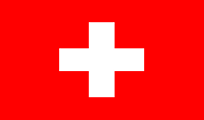Bordeaux, Burgundy, Riesling or Champagne?
Whether or not you like a wine is an entirely personal matter. The more wine you try, the better you get to know your own tastes.
A normal bottle of wine holds 75 cl (750 ml / 0.75 l). But when it comes to the shape, the standards vary from region to region.
Why is wine usually stored in glass and not in a carton (although these do exist) or another kind of container? Glass offers two crucial advantages: it doesn’t impart any flavour, and it allows you to see what’s inside. When it comes to which bottle shape is the best, however, opinions tend to differ … We share the four most common wine bottle shapes below.
- The Burgundy bottle
Burgundy wine bottles are easily recognised by their wide base. As winemakers from Burgundy were among the first to use this type of bottle, over the years it became the standard for Pinot noir and Chardonnay and is now a distinguishing feature of these wines. These grape varieties have, of course, since started to be grown in other regions of the world – but this bottle shape has also been generally accepted in these places. Other varieties are also bottled in Burgundy bottles these days, such as Barbaresco and Nebbiolo grapes. What’s more, winemakers have adopted the principle of using Burgundy bottles for wines that are stylistically similar to Pinot noir. - The Bordeaux bottle
The Burgundy bottle quickly gained currency across France, making it particularly important for competitors in Bordeaux to establish their own bottle shape. The «shoulders» beneath the bottleneck are the easiest way to tell the difference between the two bottles. It is unclear whether the projection here was originally intended to collect potential wine sediment and hold it back when decanting/pouring, or whether it was purely aesthetic. Almost all wines made from Bordeaux varieties (Merlot and Cabernet Sauvignon) use this bottle shape. - The Riesling flute
The Germans like them skinny! That’s why they chose this flute bottle for their Riesling wine from Alsace and the Mosel, which is still used there for both red and white wine to this day. It is also a highly popular bottle for white wine in Austria and Switzerland. - Champagne and sparkling wine bottles
The bottle used for Champagne and sparkling wines is very similar to the Burgundy bottle. However, it is made from thicker glass due to the enormous pressure it must withstand. Another typical feature is the indentation in the bottom, where custom dictates you place your thumb when pouring. It also reduces the risk of excess pressure building up in the bottle.
You can also find other special bottle shapes; however, they have not been able to catch on in the mass wine market.






Validate your login